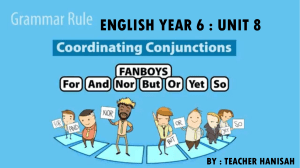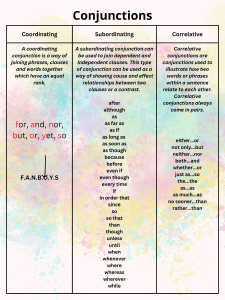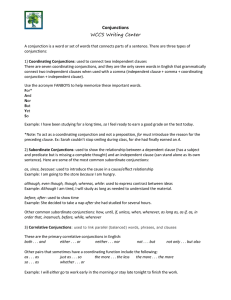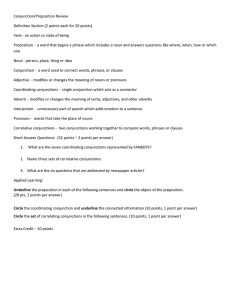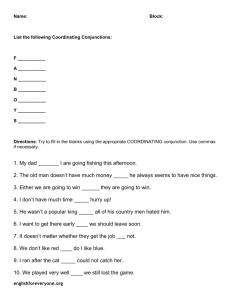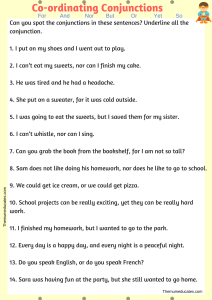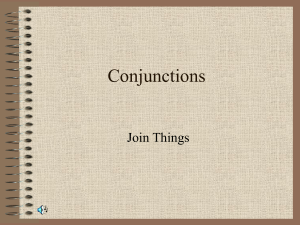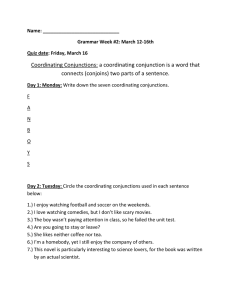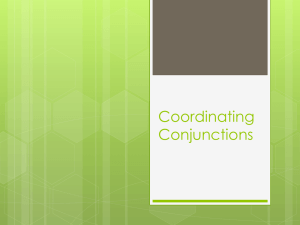Conjunctions Worksheet: Grammar Practice
advertisement
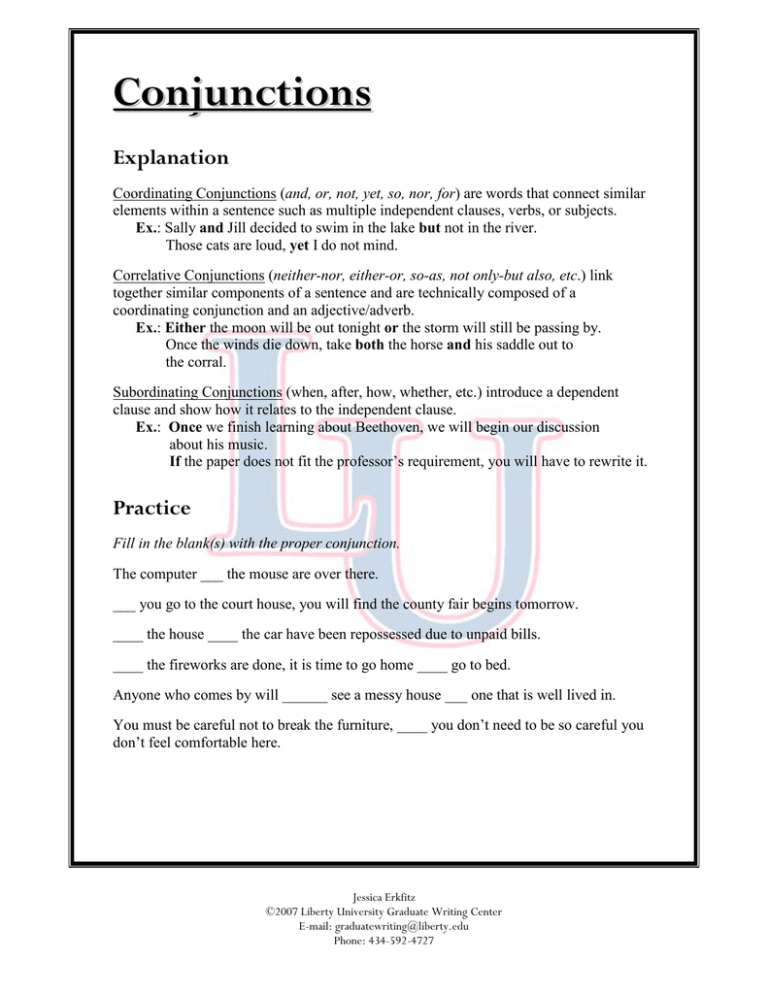
Conjunctions Explanation Coordinating Conjunctions (and, or, not, yet, so, nor, for) are words that connect similar elements within a sentence such as multiple independent clauses, verbs, or subjects. Ex.: Sally and Jill decided to swim in the lake but not in the river. Those cats are loud, yet I do not mind. Correlative Conjunctions (neither-nor, either-or, so-as, not only-but also, etc.) link together similar components of a sentence and are technically composed of a coordinating conjunction and an adjective/adverb. Ex.: Either the moon will be out tonight or the storm will still be passing by. Once the winds die down, take both the horse and his saddle out to the corral. Subordinating Conjunctions (when, after, how, whether, etc.) introduce a dependent clause and show how it relates to the independent clause. Ex.: Once we finish learning about Beethoven, we will begin our discussion about his music. If the paper does not fit the professor’s requirement, you will have to rewrite it. Practice Fill in the blank(s) with the proper conjunction. The computer ___ the mouse are over there. ___ you go to the court house, you will find the county fair begins tomorrow. ____ the house ____ the car have been repossessed due to unpaid bills. ____ the fireworks are done, it is time to go home ____ go to bed. Anyone who comes by will ______ see a messy house ___ one that is well lived in. You must be careful not to break the furniture, ____ you don’t need to be so careful you don’t feel comfortable here. Jessica Erkfitz ©2007 Liberty University Graduate Writing Center E-mail: graduatewriting@liberty.edu Phone: 434-592-4727

